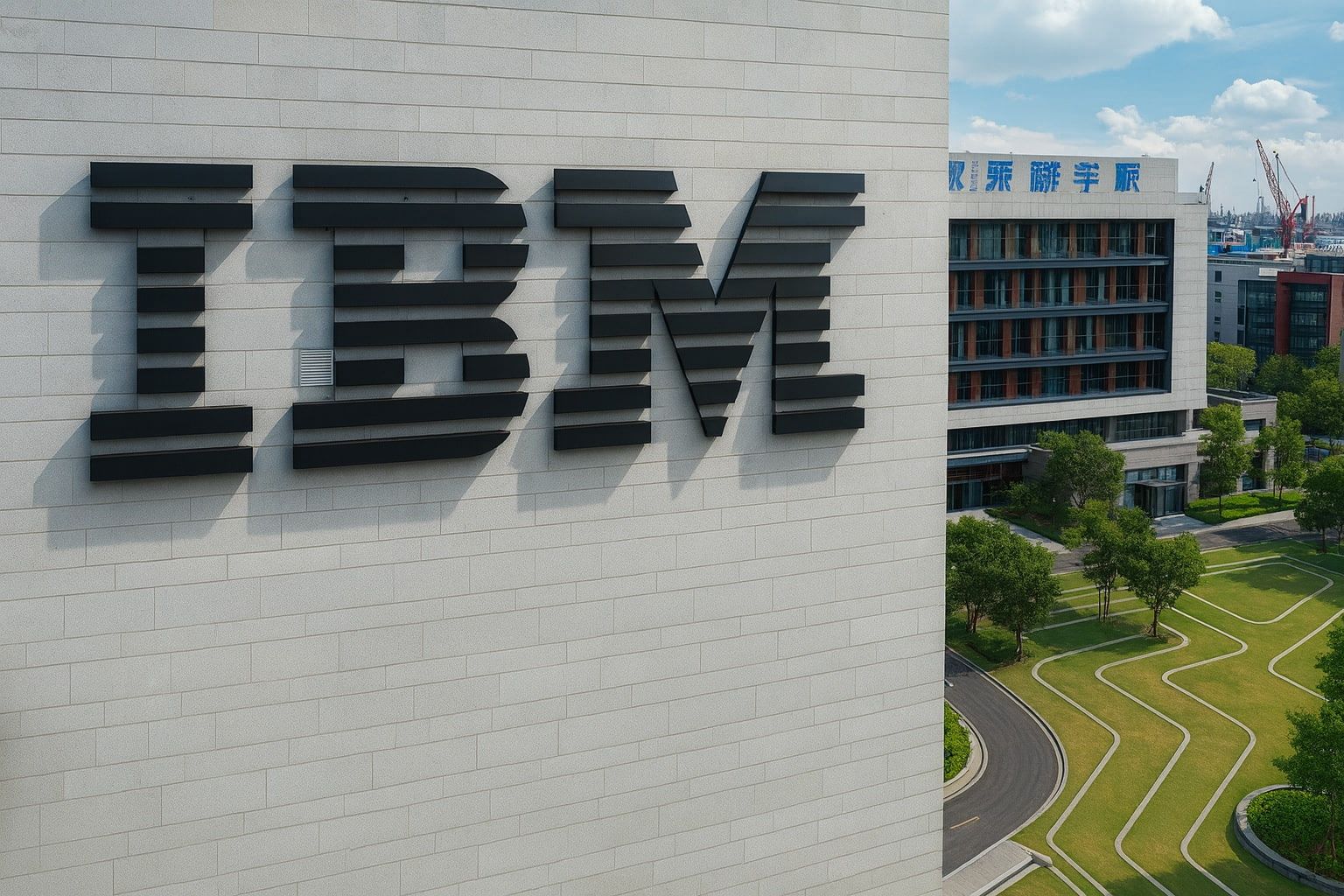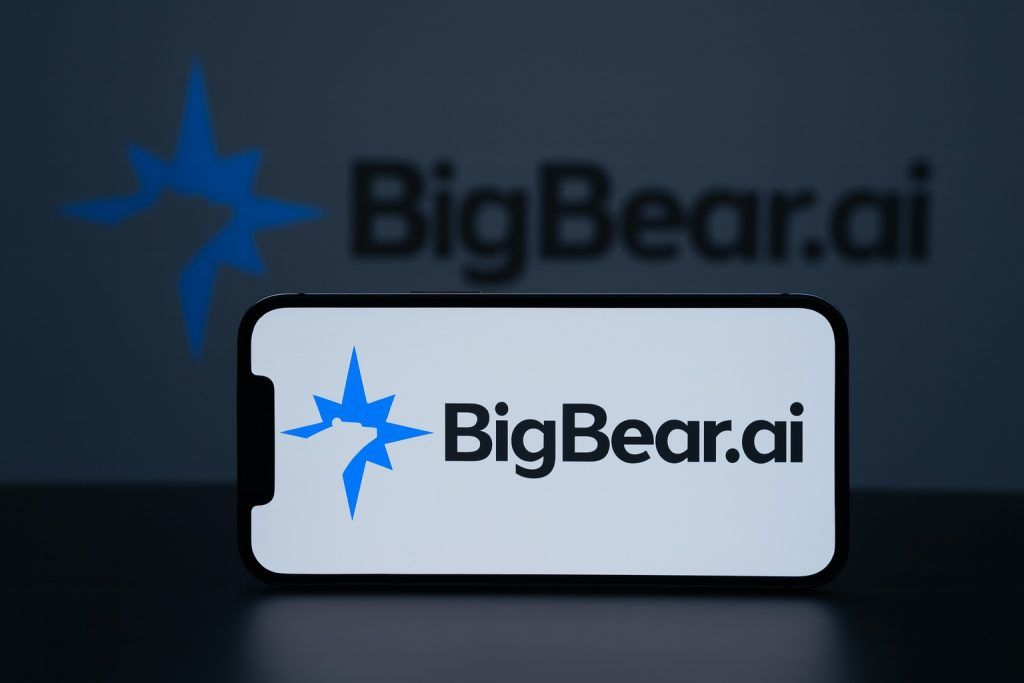- Stock Rally: IBM shares closed at $307.46 on Oct. 24, 2025, a 7.9% gain for the day [1], lifting the stock to multi-year highs. The jump followed a string of bullish news, and extended IBM’s year-to-date gain to roughly 28–30% [2] – far outpacing the broader market.
- Recent Catalysts: Investors are cheering IBM’s push into AI, cloud and quantum. In October alone IBM announced major initiatives: an AMD-powered AI supercomputer for startup Zyphra (Oct. 1) [3], Anthropic’s Claude LLM embedded in IBM development tools (Oct. 7) [4], a cloud partnership with India’s Bharti Airtel (Oct. 15) [5], new AI agents on Oracle’s Fusion Apps marketplace (Oct. 16) [6], and a Groq inference-chip alliance (Oct. 20) [7]. On Oct. 24, Reuters reported an IBM quantum computing breakthrough – a key error-correction algorithm running on standard AMD chips – prompting a further rally (shares jumped ~7.9% that day) [8].
- Earnings Beat: IBM’s Q3 2025 results (reported Oct. 22 after-market) topped expectations. Revenue was $16.33 billion (vs. $16.09 billion consensus) [9] and non-GAAP EPS was $2.65 (vs. $2.44 est.), leading management to raise full-year revenue guidance to “more than 5%” growth [10]. High-margin segments powered results: infrastructure (AI-optimized mainframes) sales jumped 17% to $3.56 billion [11], and IBM’s total AI-related “book” reached $9.5 billion (up $2 B from Q2) [12].
- Cloud Slowdown: Growth in IBM’s Red Hat hybrid-cloud business softened, easing to 14% year-over-year in Q3 (down from 16% in Q2) [13]. Transaction-processing software (mainframe software) actually declined 1% [14]. The cloud deceleration spooked some investors: IBM stock dipped ~5% in after-hours trading on Oct. 22 [15] and remained slightly lower the next day as market watchers noted that any further shortfall in Red Hat sales would disappoint [16] [17].
IBM Stock’s Recent Performance
IBM’s stock chart in late 2025 shows a sharp uptrend. After trading in the mid-$200s all summer, shares burst above $280 in mid-October, briefly topping $296 on record volume before pulling back. The Oct. 22 earnings release caused a momentary dip, but by Oct. 24 the stock closed at $307.46 [18]. This surge puts IBM near the top of its 52-week range (low $203 to high $310 [19]) and makes it one of the year’s best performers in the Dow Industrials. As one market commentator noted, IBM has become “a quiet way to play AI and quantum”, steadily accumulating tech wins that have changed investor sentiment [20].
Nevertheless, analysts caution that the latest rally is “priced to perfection.” Morgan Stanley in mid-October reiterated an Equal Weight rating and $256 target on IBM, observing the stock now trades at a premium vs. peers [21]. Synovus Trust portfolio manager Dan Morgan likewise quipped that “the stock is priced to perfection…there’s just not a lot of room to miss” given the lofty valuation [22] [23]. IBM’s forward P/E is about 24–25× [24], far above its historical norm (~16×) and higher than peers (Accenture ~18×) [25]. In short, while the momentum is impressive, many analysts warn that any setback (e.g. slower hybrid-cloud growth) could trigger a pullback [26] [27].
Q3 2025 Results and Financial Highlights
IBM’s Oct. 22 earnings report reinforced the company’s turnaround narrative. Revenue of $16.33 B topped Wall Street’s $16.09 B forecast [28]. Non-GAAP earnings of $2.65 per share also beat consensus $2.44. CFO Jim Kavanaugh noted strength in IBM’s high-end mainframe business: the new AI-optimized Z-series mainframe (with AMD-designed AI chips) saw outsized demand from financial and regulated-industry clients [29]. Management said the “AI book” – revenues tied to AI – jumped to $9.5 B in Q3, indicating growing traction [30]. Importantly, IBM raised its full-year revenue outlook: growth is now expected above 5% (vs. prior guidance of at least 5%) [31].
On the profit margin side, IBM showed modest improvement. Higher-margin software and mainframes offset pressures. Gross profit margin ticked up (CFB: in percent of revenue, per IBM), and Red Hat/hybrid-cloud revenue stayed solid at $5.5 B. However, the key slowdown in Red Hat growth (14% vs. 16%) caught investor attention [32]. As Michael Ashley Schulman of Running Point Capital puts it, “a slowdown in Red Hat revenue … will disappoint some who were hoping for accelerating growth in what is a high-margin segment” [33]. Indeed, after the news, IBM stock momentarily gave back some gains – a sign the market is watching execution closely.
Despite mixed cloud results, IBM’s financial position remains strong. The company generates ample free cash flow (guidance ~$13–14 B for FY2025) and sports a solid balance sheet. It also continues returning cash to shareholders: the quarterly dividend of $1.68 (annualized $6.72) yields about 2.3% [34], and has been raised for 29 straight years. This dividend “Aristocrat” status underpins investor confidence even as IBM trades at tech-like multiples.
AI, Cloud and Quantum Catalysts
The surge in IBM’s stock largely reflects excitement over its AI, cloud and quantum initiatives. In early October IBM rolled out Granite 4.0, a new family of AI models, and integrated NVIDIA GPUs via new deals. Crucial partnerships reinforced the message:
- AMD & Zyphra AI Supercomputer (Oct. 1): IBM announced a collaboration with AMD to host one of the largest AI training clusters for Zyphra, a $1B-valued AI startup. Under a multi-year deal, IBM will deploy AMD MI300X GPUs on IBM Cloud to power frontier AI model training [35].
- Anthropic’s Claude Integration (Oct. 7): IBM said it is infusing Anthropic’s Claude LLM into its software tools, launching an AI-first integrated development environment. The partnership “enhances our software portfolio with advanced AI capabilities while maintaining the governance, security, and reliability our clients expect,” said Dinesh Nirmal, IBM SVP of Software [36]. Anthropic’s Mike Krieger added that Claude is the “go-to AI for developers” and this deal brings it to more enterprise teams [37].
- Airtel Cloud Expansion (Oct. 15): IBM joined forces with India’s Bharti Airtel to offer IBM Cloud services via Airtel’s new cloud platform [38]. This will allow enterprise customers in banking, healthcare and government to deploy IBM AI-ready servers locally, addressing data residency needs in one of the world’s fastest-growing cloud markets.
- Oracle AI Agents (Oct. 16): IBM launched three new AI agents for Oracle Fusion Cloud Applications (finance, HR, supply chain) via the Oracle AI Agent Marketplace [39]. Neil Dhar of IBM Consulting explained that this collaboration combines “Oracle and IBM collective enterprise AI expertise” to drive productivity and innovation [40]. More agents (built on IBM’s watsonx Orchestrate) are planned, expanding IBM’s enterprise AI footprint.
- Groq Inference Chips (Oct. 20): In a strategic tie-up with AI-chip startup Groq, IBM said it will integrate Groq’s inference processors into its watsonx platform for ultra-fast AI agent deployment [41]. Groq’s co-founder noted the partnership “makes agentic AI real for business” by combining Groq’s speed with IBM’s enterprise reach [42].
Finally, IBM’s quantum computing efforts also drew headlines. On Oct. 24 Reuters reported that IBM’s researchers ran a key quantum error-correction algorithm on a standard AMD FPGA chip [43]. Lab director Jay Gambetta called it “a big deal” – the implementation ran 10× faster than needed on off-the-shelf hardware [44]. This proof-of-concept shows IBM’s advances toward practical quantum machines and helped fuel the stock’s jump.
Analyst Forecasts & Investor Sentiment
Wall Street’s view on IBM is cautiously optimistic but guarded. The average 12-month price target is around $280–$286 (per MarketBeat/TipRanks), roughly flat from current levels [45]. About half of analysts rate IBM a “Buy,” while the consensus rating is closer to Hold/Neutral [46]. Targets span a wide range: top bulls argue the AI/cloud pivot could justify much higher valuations (Goldman Sachs reiterated a Buy/$350 target in early Oct [47]; Wedbush sees ~$325; Bank of America raised its target to ~$310). On the other hand, skeptics warn the rally may have overshot. Bernstein’s Toni Sacconaghi and others are near $280 targets, noting IBM lags faster peers. Morgan Stanley, as noted, stays equal-weight at $256 [48].
One bullish voice noted that IBM is a “quiet way to play AI and quantum” without the hype of bigger tech names [49]. But many agree the stock is richly valued. As Morgan quipped in Reuters, “there was little wiggle room for any metric to come up short” [50]. If IBM delivers on AI and regains its Red Hat momentum, some analysts see mid-$300s upside. But if growth slows, target downgrades (some as low as the low-$200s) could follow.
Forecast: Going forward, analysts expect modest growth (mid-single-digit revenue gains) for 2026 under IBM’s plan. Many models already bake in flat-to-down stock returns from here. For example, one Wall Street report shows targets roughly $200–$350 (with a midpoint near $275) [51]. The market’s mixed signals (high valuation vs. promising innovation pipeline) suggest any new catalyst—next earnings, a big AI deal, or further quantum news—could sway sentiment. As one portfolio manager warns, after this rally “there’s just not a lot of room to miss” [52] [53]. In short, IBM’s stock has broken out on AI/cloud optimism, but investors will closely watch execution and whether the “Big Blue” can deliver on sky-high expectations [54] [55].
Sources: IBM filings and press releases; Reuters, Bloomberg and Yahoo Finance reports; TechStock² (ts2.tech) analysis; analyst reports; and stock-trading data [56] [57] [58] [59]. The information is current as of Oct. 25, 2025.
References
1. www.investing.com, 2. ts2.tech, 3. newsroom.ibm.com, 4. newsroom.ibm.com, 5. www.reuters.com, 6. newsroom.ibm.com, 7. newsroom.ibm.com, 8. www.reuters.com, 9. www.reuters.com, 10. www.reuters.com, 11. www.reuters.com, 12. www.reuters.com, 13. www.reuters.com, 14. www.bloomberg.com, 15. www.reuters.com, 16. www.reuters.com, 17. ts2.tech, 18. www.investing.com, 19. www.investing.com, 20. ts2.tech, 21. ts2.tech, 22. www.reuters.com, 23. ts2.tech, 24. www.reuters.com, 25. www.reuters.com, 26. www.reuters.com, 27. ts2.tech, 28. www.reuters.com, 29. www.reuters.com, 30. www.reuters.com, 31. www.reuters.com, 32. www.reuters.com, 33. www.reuters.com, 34. ts2.tech, 35. newsroom.ibm.com, 36. newsroom.ibm.com, 37. newsroom.ibm.com, 38. www.reuters.com, 39. newsroom.ibm.com, 40. newsroom.ibm.com, 41. newsroom.ibm.com, 42. newsroom.ibm.com, 43. www.reuters.com, 44. www.reuters.com, 45. ts2.tech, 46. ts2.tech, 47. ts2.tech, 48. ts2.tech, 49. ts2.tech, 50. www.reuters.com, 51. ts2.tech, 52. www.reuters.com, 53. ts2.tech, 54. www.reuters.com, 55. ts2.tech, 56. www.reuters.com, 57. newsroom.ibm.com, 58. www.reuters.com, 59. ts2.tech







